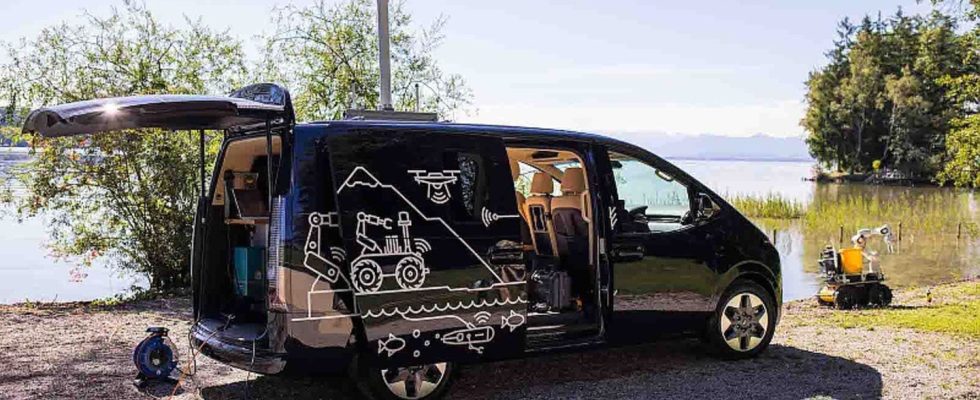Fascination: Cars allow drones to fly
Aviators of the skies
Hyundai Staria TU Munich
© press-inform – the press office
Cars that start drones as if by magic – years ago this would have sounded like a thriller from the distant future. But the electric planes in the sky have long been a reality and have very different tasks.
There was a great stir when Polestar presented its near-production study in spring 2022 O2 presented. In times of fewer and fewer convertibles, the electric sunbather was a real revelation – and not just for summer. When closed, the Polestar O2 is a sporty coupé with a wide track, long wheelbase and short overhangs. The two-part roof disappears behind the interior at the push of a button, so the four occupants can enjoy the wind of the over 400 hp electric vehicle. The front and side windows protect passengers from annoying turbulence like a helmet visor. Special air ducts on the vehicle are intended to barely affect the range of the open electric vehicle.
Instead of the usual exterior mirrors, the Polestar O2 is equipped with cameras all around. But that’s not all, because once the roof of the O2 is opened, the occupants can not only let the wind blow through their hair, but also send off a drone. This can be started even from a moving car at speeds of up to 90 km/h. Developed in collaboration with Aerofugia’s consumer electronics brand Hoco Flow, the concept drone can be used while driving to record driving sequences or explore the area, among other things. After use, the drone returns to the car automatically. Particularly practical: when the car is parked, the video clips can be edited and shared directly via the central 15-inch center display in the Polestar O2.
The drones go one step further and, as if by magic, go on a grand tour of discovery from the interior of the Hyundai Staria. While the reconnaissance drone in the Polestar O2 is still a thing of the future, the family van has recently been in use on behalf of the Technical University of Munich. Only from the outside does the Staria look like a normal family van, but this is actually part of a research project that is all about robotics and, above all, its concrete application. On board the family Hyundai are several flying drones, an underwater drone that looks like a mini submarine and a robot called Husky that can move on land.
Prof. Dr. Sami Haddadin from the Technical University of Munich: “They are intended for environmental monitoring and are designed in such a way that no special robot know-how is required to operate them.” The list of possible applications is long and ranges from detecting environmental pollution to examining mined or contaminated regions. The car, called Svan, is a robot hub, charging station, data center and command post all in one. The flying drones monitor from above and explore the terrain. A special feature is that the drone pilot can automatically control several aircraft at the same time and thus cover an area more quickly and efficiently. For example, if dangerous goods are discovered in a body of water, the underwater drone is used. It has a movable gripper arm and is also controlled from the Svan – with an Xbox controller.
But drones can take on even more dangerous tasks. The armored Brabus Invicto based on a Mercedes G-Class is not prepared for heavy fire and grenade attacks, but can also search the potential danger area in the surrounding area with a drone. The armor of the 4.82 meter long vehicle itself is provided by a specially developed protective cell that is self-contained and firmly screwed into the body.
The various armors are supported by high-tech equipment that also sets standards for a secured G-Class. With the Invicto Mission, special operations forces from the police, border guards or authorities get an armored vehicle that is tailored entirely to their specific requirements. This not only includes the heavy armor of the car itself, but also details such as an openable roof hatch, remote-controlled searchlights and a remote-controlled drone as a reconnaissance aircraft that has its eyes where the vehicle is not yet. Then the armor of protection class VR6 Plus, which resists 7.62 x 39 caliber bullets from the AK-47 rapid-fire rifle or hand grenades with explosive charges of up to 12.5 PETN, does not even have to be used.

